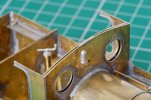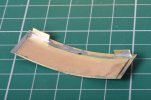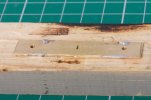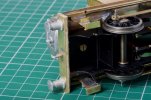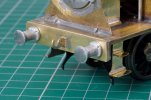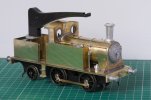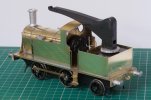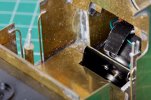Richard Gawler
Western Thunderer
A mate suggested building it as an 0-6-0. At the time I thought this was a bit ambitious for a first attempt at a loco build (I had after all bought a kit for an 0-4-0), so I thought do an 0-6-0 with its rear rods removed and running as an 0-4-2. But I had the Lomac wheels to hand and a third set of driving wheels was another £24 to spend on what is really a test piece for me to show myself I can build a loco from a well-known good kit.
My book on crane tanks has lots of 0-4-4 and 0-4-2 examples. An 0-4-4 seemed too ambitious because of the weight distribution and so Nellie is an 0-4-2. She runs beautifully and even copes with my Setrack point with its 1020 mm radius and 31 mm gauge.
I expect you are quite correct, the engineers of the day would not have used a radial axle. However, if I can use one and see that it tightens the line of the loco on a sharp curve then this ought to reduce instances of buffer lock (shouldn't it?) and if so I will feel I have achieved something new even if this wasn't a particular objective when I began.
My book on crane tanks has lots of 0-4-4 and 0-4-2 examples. An 0-4-4 seemed too ambitious because of the weight distribution and so Nellie is an 0-4-2. She runs beautifully and even copes with my Setrack point with its 1020 mm radius and 31 mm gauge.
I expect you are quite correct, the engineers of the day would not have used a radial axle. However, if I can use one and see that it tightens the line of the loco on a sharp curve then this ought to reduce instances of buffer lock (shouldn't it?) and if so I will feel I have achieved something new even if this wasn't a particular objective when I began.


